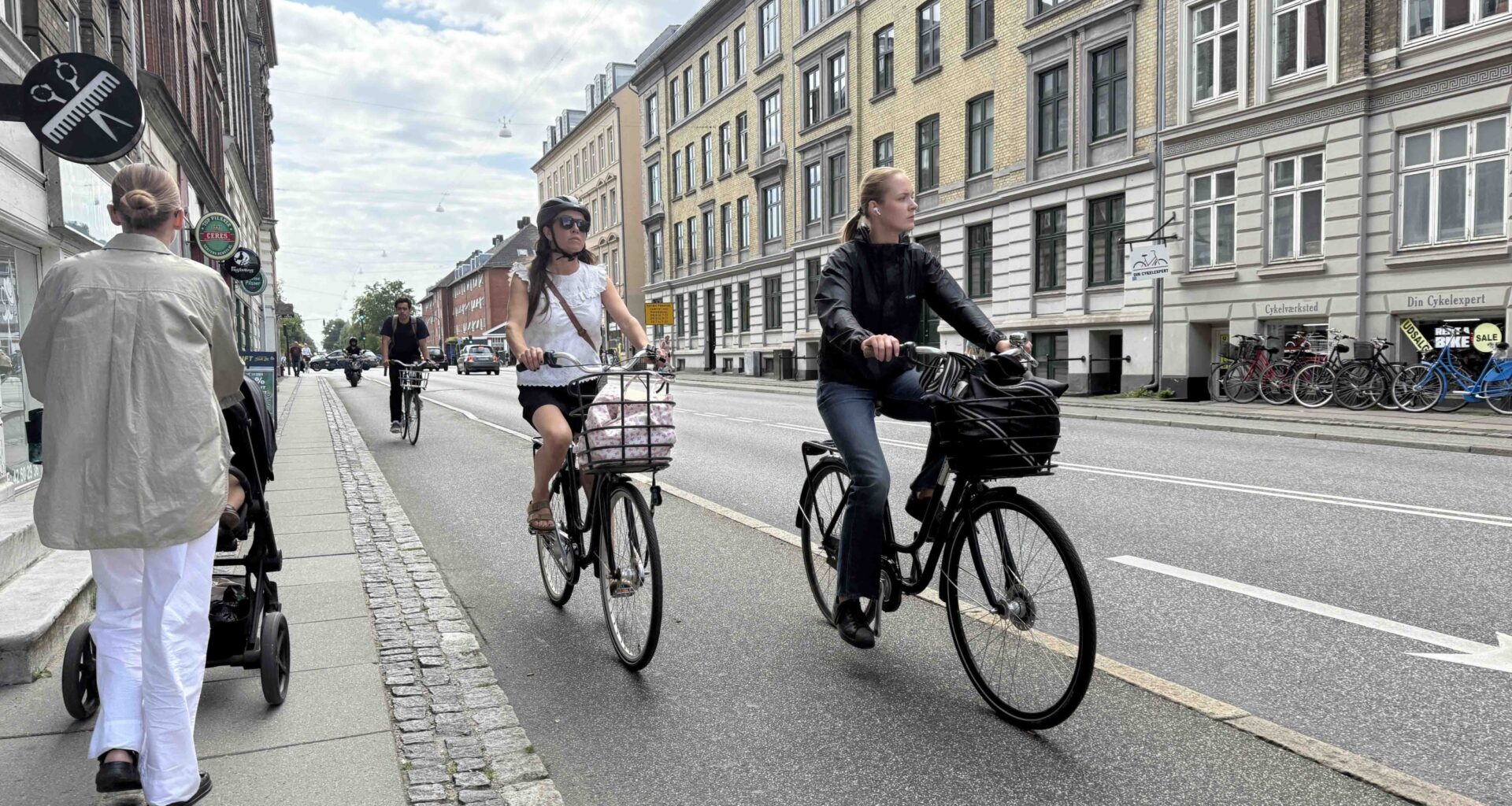I’ve just spent five days in Denmark, visiting Copenhagen and other cities and villages. Although most of my visit was a holiday, I couldn’t help but put on my work hat whenever a bicycle whizzed by.
Visiting a country like Denmark that is so bicycle-focused (not dissimilar to The Netherlands, which I’ve also visited but not on this trip) makes me, and I’m sure many Australian cyclists and non-cyclists, envious.
Yes, it’s difficult to compare a small European country that is essentially ‘flat’ with a vast country with plenty of hills like Australia, but we can certainly learn from the Danes. It would be so beneficial to our health and our environment. Australian cities are extremely car-centric. Nearly all our roads are set up to give car drivers the first right of access, and it doesn’t have to be that way.
It takes foresight and leadership from our governments to make changes, something they have achieved in Denmark.
My research tells me that in January 2022, the Danish Ministry of Transportation announced an investment of $458 million in new cycling infrastructure. The first $64 million will be used in 2022, mainly to establish new bike lanes across the country.
In the past 10 years, Copenhagen has invested over $200 million in cycling infrastructure. In the budget for 2022, $10 million has been allocated for initiatives aimed at maintaining and improving Copenhagen’s position as the most bike-friendly city in the world.
On average, each Dane cycles 1.4 kilometres a day, with a combined total of 8 million kilometres per day. Twenty-five per cent of all trips under 5 km are done on a bike, and 16 per cent of all trips are done on a bike. Plus, 45% of children ride to school.
Seven out of 10 Danes over the age of six own a bike. In Copenhagen, this number is nine out of 10. The first bike lane in Denmark was established in 1892 by the Esplanade in Copenhagen. Today, there are 385 km in the city, and the network of national cycle routes spans 4,770 km across all of Denmark.
Half a million bicycles are sold each year in Denmark, which is amazing considering the population is only six million people. Only 15% of Danes wear a helmet while riding a bike, although I saw plenty of riders wearing helmets, particularly the road bike riders.
Those participation rates are super impressive and the envy of many.
While I was in Denmark, I saw thousands of people riding bikes. Although the majority of them were riding for transport reasons, I did see maybe 20 dedicated road bike riders, just like many of our BA readers. Perhaps the road riders are inspired by their sporting heroes, like Jonas Vingegaard, Mads Pedersen, and Cecilie Uttrup Ludwig, who are all Danes.
What was really impressive about the Danes riding for transport was the vast array of people: older people, small children, whole families in cargo bikes, delivery drivers, pregnant women, parents with kids in tow, smartly dressed people on their way out to dinner, workers in business attire, tourists on rental bikes, e-bikes, and more. It was entertaining to watch them all fly by.
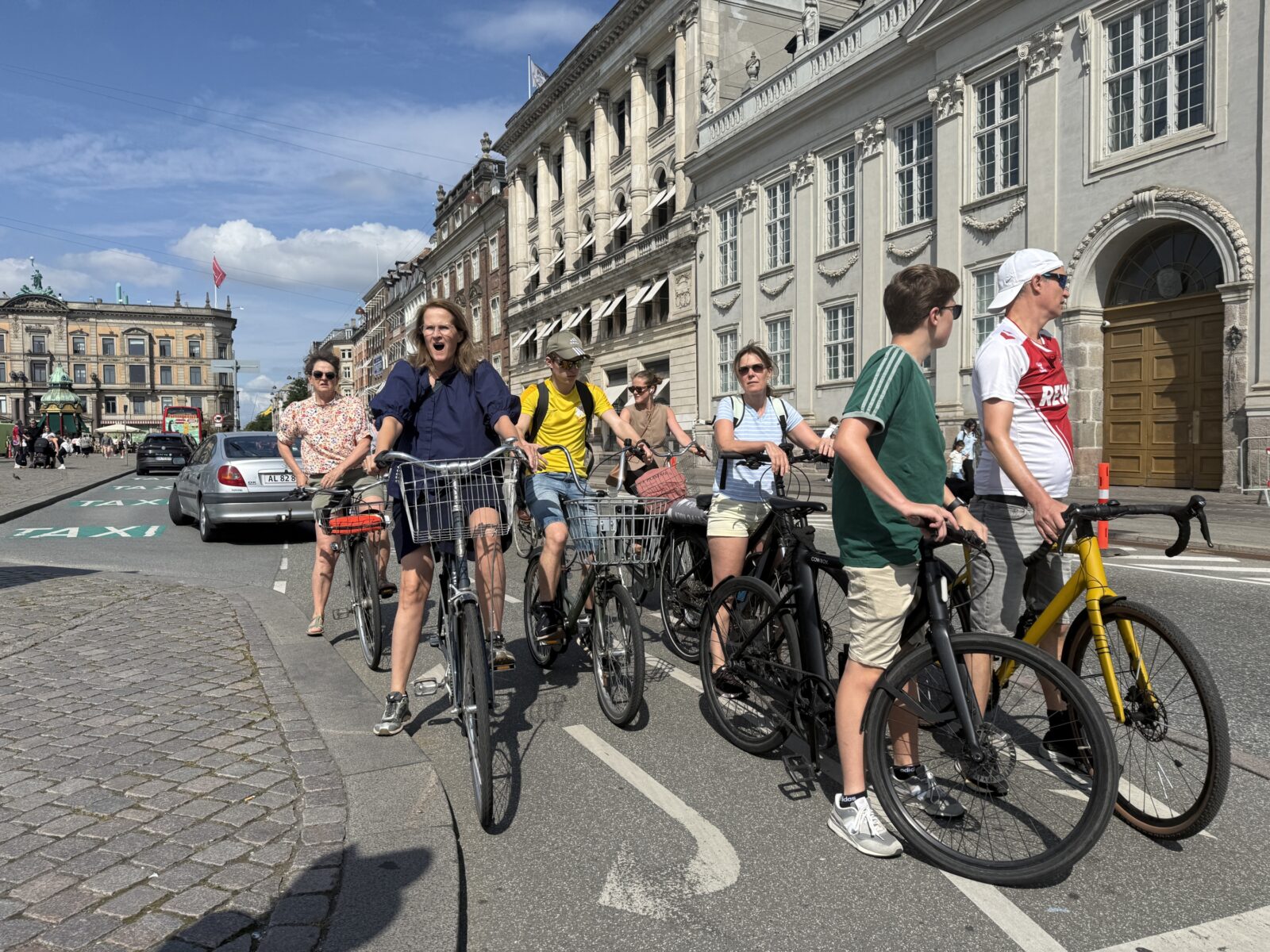
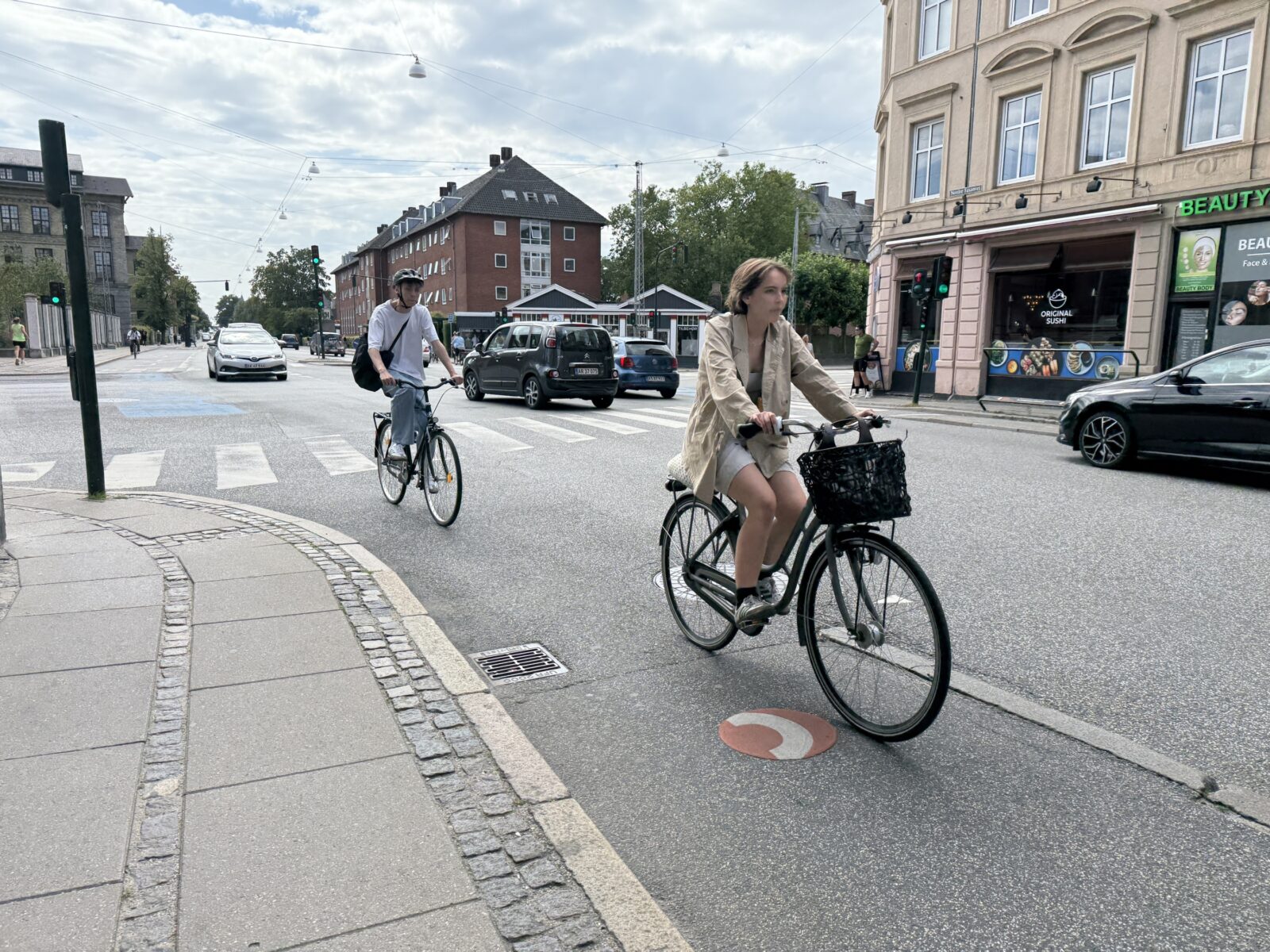
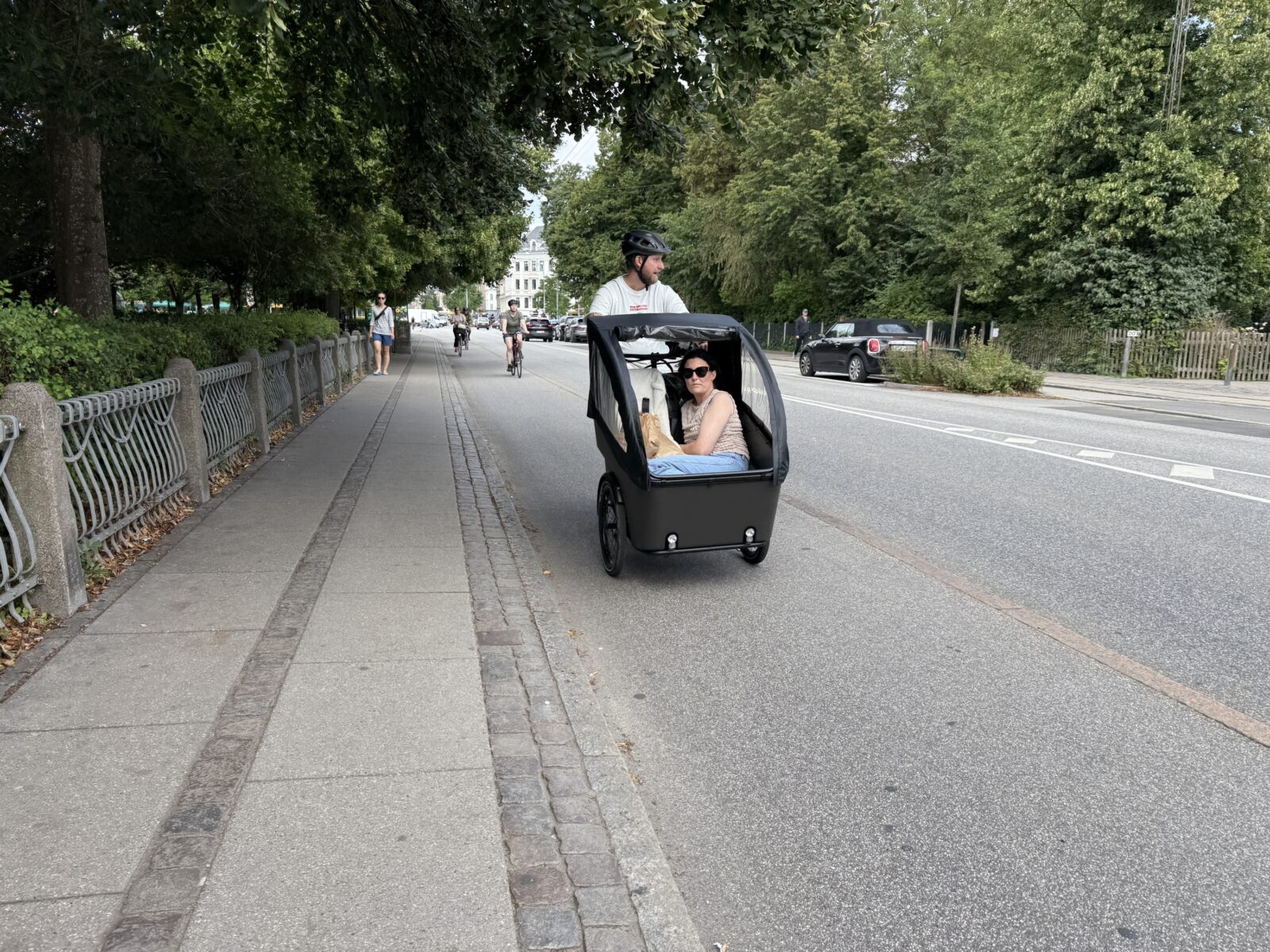
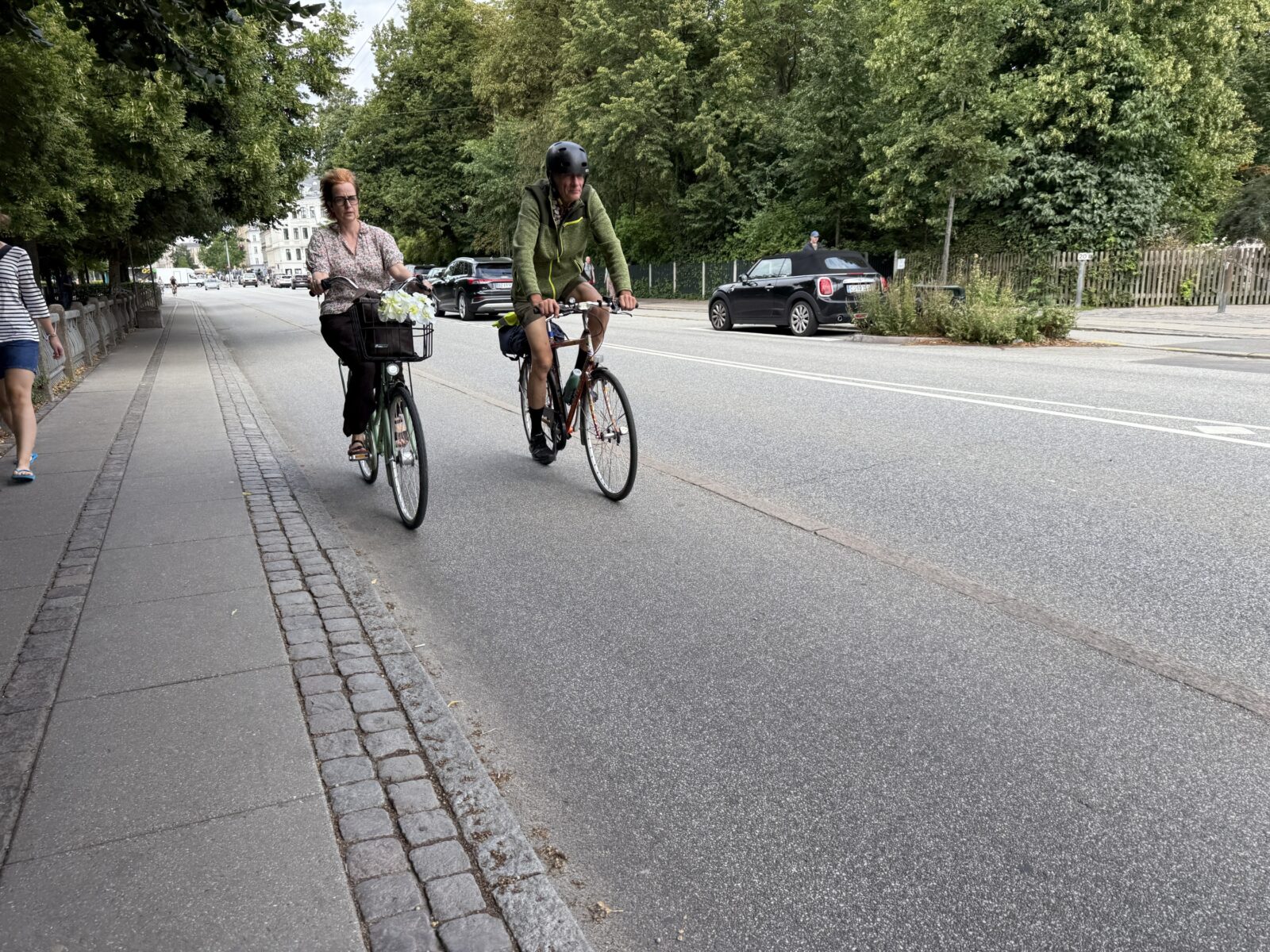
Everyone respects the bike lanes and crosses with care. As a consequence of all those people on bikes, the traffic is light, and there are very few parked cars – cycling heaven.
The other very impressive thing is the infrastructure beyond the bike paths. The regional trains are set up to take many bikes, so riders can easily travel out of the city. When I travelled to the city of Roskilde by train, I saw a couple of roadies getting off the train to enjoy the beautiful countryside by bike.
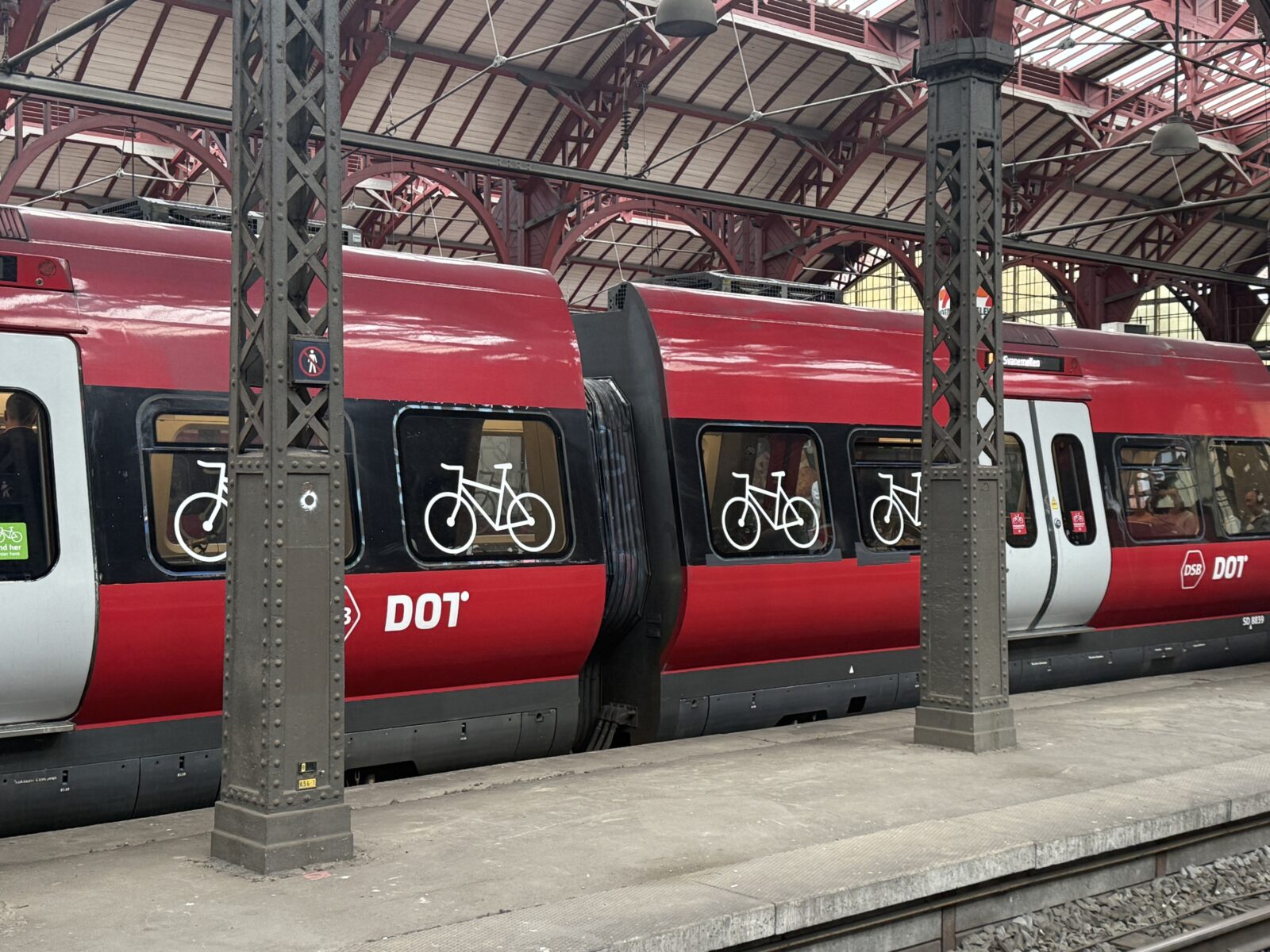
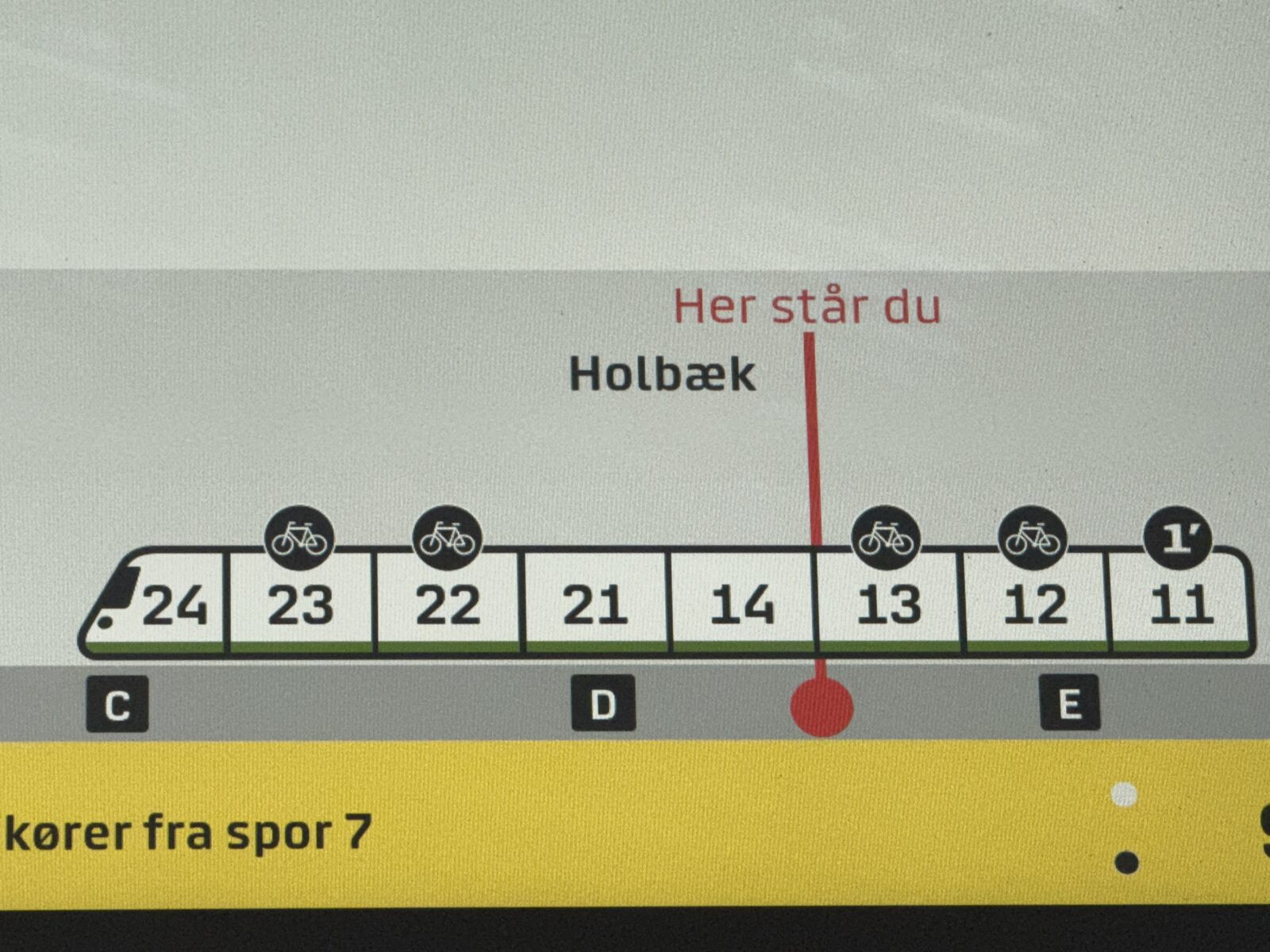
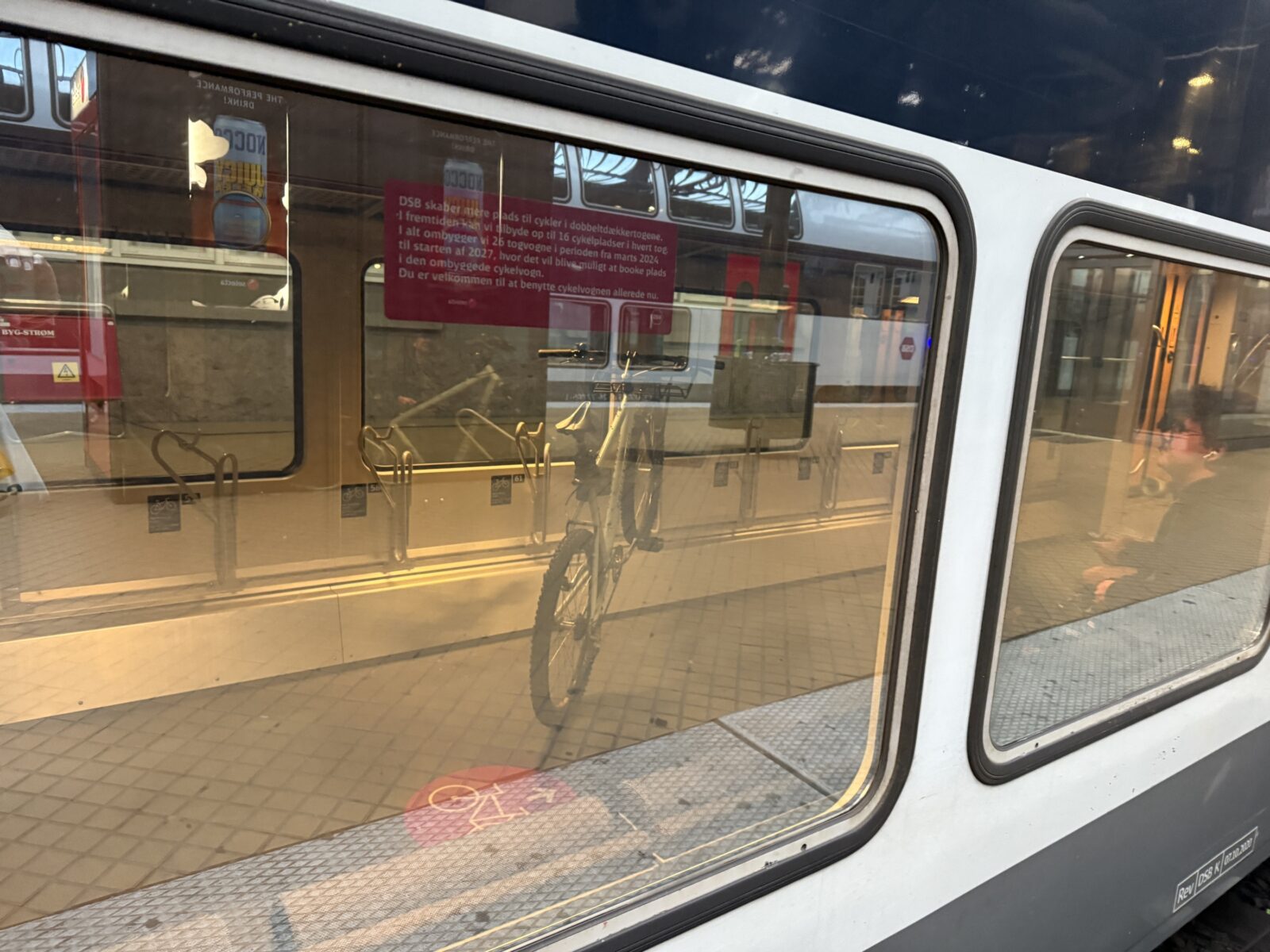
I cannot wait to visit again. I hope to bring my road bike next time and ride in the beautiful countryside, which by the way, isn’t entirely flat. I saw a few minor hills, but nothing like the French Alps, which I visited the week before.
